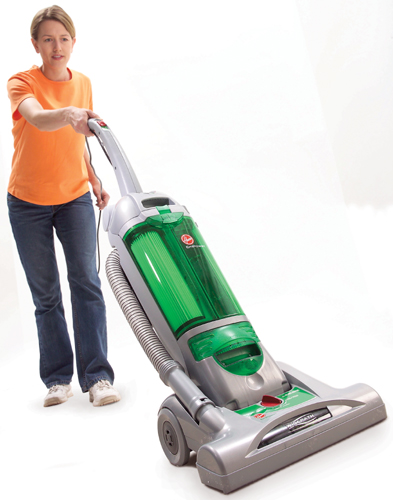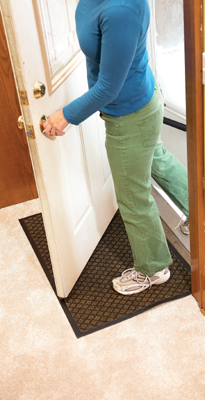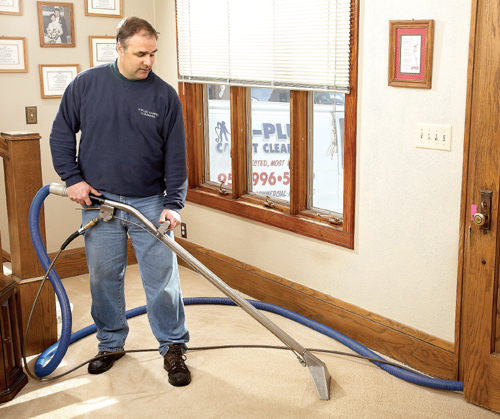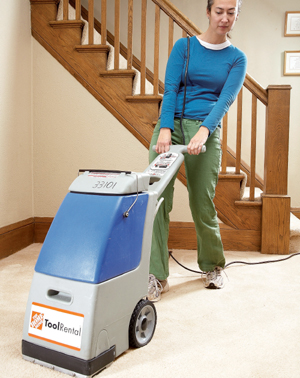No. 11
Make your carpet last
Keep it clean, double its life span and save thousands
Dirty carpet doesn’t just look bad. Dirt is abrasive, so when you walk across a dirty carpet, dirt grinds away at the fibers. The result is carpet that looks dull, stains easier and soon becomes matted down. That’s why cleaning is the best way to maximize the life of your carpet and delay the heavy cost of replacement.

Vacuum smarts
• Vacuum often. Vacuum entrance areas and high-traffic areas twice a week and the rest of the carpeting at least weekly.
• Set the height right. Raise it to its highest setting, turn it on and lower it until you can feel the vacuum trying to tug itself forward.
• Slow down. It’s OK to make one quick pass over low-traffic areas, but make two slow passes over high-traffic areas.
• Start with a clean filter. A dirty bag or filter reduces your vacuum’s cleaning power. Replace filters on bagless vacuums every three months. Replace vacuum bags when they’re three-quarters full.

Use doormats, in and out
A pair of mats at each door keeps carpets much cleaner. Drop a coarse-textured mat outside your door to remove soil. Use a water-absorbent mat inside to prevent wet shoes on the carpeting.

Hire a quality cleaning pro
Most carpet manufacturers recommend professional hot-water extraction as the primary cleaning method for synthetic carpets. The best strategy is to hire a professional every year or two and clean the carpet yourself between pro cleanings. Here are some hiring tips:
• Hire a pro who uses truck-mounted equipment rather than portable steam cleaning equipment. Truck-mounted equipment exhausts the dirty air and humidity outside. Its stronger suction leaves carpets drier, too.
• Ask for a high-pressure rinse. This agitates the pile and neutralizes the carpet’s pH.
• Ask the pro to set furniture on blocks or pads after cleaning. This prevents stains from transferring from furniture legs to the damp carpet.
• Make the estimate include everything—such as furniture moving, vacuuming (some charge extra for this, so check), routine spot removal, preconditioning and deodorizing as part of a standard cleaning package.

Clean carpet yourself (sometimes)
DIY carpet cleaning saves the cost of a pro, but it’s not a substitute for pro cleaning. Rented equipment just can’t do what pro gear and know-how can do. So a good strategy is to alternate between pro cleaning and DIY cleaning. Here are some ways to get the most from rental equipment:
• Clean the carpet before it becomes really dirty. If you wait until the carpet is filthy, cleaning it will be much more difficult, take much longer and cost more.
• Vacuum well before and after cleaning. Vacuum beforehand to remove large particles of soil. Vacuum again after you clean and the carpet is completely dry to pick up soil that wicks to the surface during drying.
• Pretreat stains and high-traffic areas. Mix a drop of detergent with hot water in a spray bottle and lightly mist the dirtiest areas. Let sit 10 minutes before the general cleaning.
• Use less soap than directed. The soap used in DIY machines foams a lot and leaves behind a lot of residue, which acts as a dirt magnet. Use a tablespoon or less of soap to 1 gallon of hot water to prevent soap residue.
• Use a mild acid rinse. DIY machines are often sold with a neutralizing rinse, or you can make your own using 1 cup of white vinegar to 1 gallon of hot water. Rinse after you make one pass with the detergent solution.
• Don’t overwet the carpet. DIY machines put a lot of moisture into the carpet, and most don’t have enough suction to extract it thoroughly. Make only one pass with the soap-and-water solution. Make one pass with the neutralizing rinse. Then make three drying passes with the water switched off.
• Let it dry thoroughly. After you clean your carpets, open the windows, use fans and a dehumidifier, or put the AC on a moderate setting (72 to 78 degrees) to remove excess moisture from the air. Don’t replace the furniture or walk on the carpet until it’s completely dry. This can take up to 12 hours, though six to eight hours is typical.



